- Quick Read
- Deep Read ( 6 Min. )

Why is Christian Science in our name?
Our name is about honesty. The Monitor is owned by The Christian Science Church, and we’ve always been transparent about that.
The Church publishes the Monitor because it sees good journalism as vital to progress in the world. Since 1908, we’ve aimed “to injure no man, but to bless all mankind,” as our founder, Mary Baker Eddy, put it.
Here, you’ll find award-winning journalism not driven by commercial influences – a news organization that takes seriously its mission to uplift the world by seeking solutions and finding reasons for credible hope.
Explore values journalism About usIn Today’s Issue
- The legacy of ‘boys will be boys’ on American life
- A ‘Trump doctrine’ on trade? He’s anti-globalist but still wants deals.
- Tsunami: understanding the science of seabed disruption
- In election, Brazilians see flashback to fascism – or see decisive reform
- Sand blast: Beachcombers worldwide haul 20 million pounds of trash in one day
Monitor Daily Podcast
- Follow us:
- Apple Podcasts
- Spotify
- RSS Feed
- Download
TODAY’S INTRO
Harnessing the power of light
This week, the world recognizes progress in six areas of human endeavor. On Tuesday, the $1 million 2018 Nobel physics prize was shared by three scientists for harnessing the power of light.
American Arthur Ashkin got the nod for creating “optical tweezers” – using beams of light to handle tiny objects, such as atoms and cells. Gérard Mourou of France and Donna Strickland of Canada were recognized for inventing “chirped pulse amplification” – turning lasers into more powerful and ubiquitous tools. Dr. Strickland is only the third woman to win a Nobel Prize in physics. That’s a gender imbalance that the Nobel committee is taking steps to address.
To many observers, the crown jewel of the Nobel Prizes is the peace prize (coming Friday). But arguably the standards are higher for a Nobel in physics, where breakthroughs must stand the test of time. For example, this year’s winners were recognized for work done more than 30 years ago. In Strickland’s case, she was a grad student at the time.
So, in addition to creativity, patience is part of what it takes to win a Nobel. And, according to the 2004 physics winner Frank Wilczek, understanding that failure is often a steppingstone when solving really difficult problems. “If you don’t make mistakes, you’re not working on hard enough problems…,” he said.
Now to our five selected stories, including a path to progress on trade, testing assumptions about manhood, and Brazil’s tilt toward fascism.
Share this article
Link copied.

Help fund Monitor journalism for $11/ month
Already a subscriber? Login

Monitor journalism changes lives because we open that too-small box that most people think they live in. We believe news can and should expand a sense of identity and possibility beyond narrow conventional expectations.
Our work isn't possible without your support.
The legacy of ‘boys will be boys’ on American life
Men and women today are being challenged to reexamine long-held concepts of young manhood and masculinity. What’s acceptable behavior, and what’s immoral and hurtful, appear to be shifting.
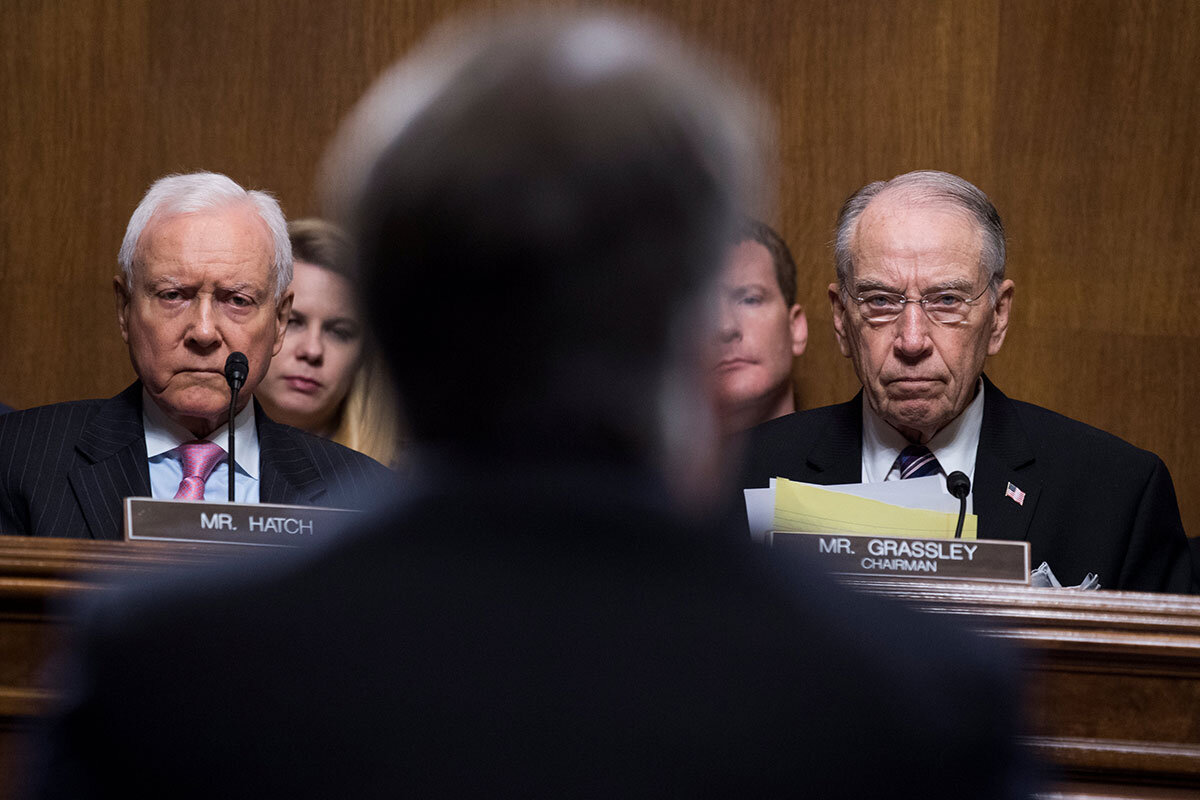
It’s a cultural ambivalence that comes with a ready-made list of clichés: “Boys will be boys,” they need time to “sow their wild oats.” If teens and men in their early 20s are loud, loutish, and sexually aggressive, the argument goes, much of it can be chalked up to “youthful indiscretions.” Those were only “indiscretions” from the perspective of the young men perpetrating them – not the young women who experienced them as “humiliating” and “shameful,” says ethicist Celia Fisher. Historians trace the sexual double standard to Victorian times, when women were expected to uphold the pillars of moral virtue. By the early 20th century, industrialism and urban living evoked a crisis in masculinity. Ideals of restraint gave way to the celebration of a more reckless masculinity. Today, it can be seen in a “locker room” culture in which young men are encouraged to establish their place in the masculine hierarchy. But that double standard doesn’t just demean one gender, says Maggie Seymour, a former intelligence officer. “It’s also incredibly insulting to men. I firmly believe men are capable of understanding human emotions and interactions and controlling their impulses.”
The legacy of ‘boys will be boys’ on American life
When it comes to the proper behavior of its young men, American society has long maintained a not-so-subtle ambivalence about the way boys are supposed to grow up and develop into men.
Perhaps since the Victorian era, beneath the surface of accepted social values that would uphold a sober-minded code of behavior for its young men, many Americans also maintain a certain belief that the next generation of strong, masculine leaders need a time to explore their own testosterone and often alcohol-fueled wildness and aggression.
It’s an ambivalence that comes with a ready-made list of clichés: “Boys will be boys,” boys need time to “sow their wild oats,” and, as expressed more recently, boys should have a private “locker room culture.” And if many men in their formative teens and early 20s are loud, loutish, and sexually aggressive, the argument goes, much of it can be chalked up to “youthful indiscretions.”
As the FBI investigates this week allegations that Supreme Court nominee Brett Kavanaugh sexually assaulted and exposed himself to young women when he was of this formative age more than 30 years ago, many women have begun to zero in specifically on this cultural ambivalence, and the long-held double standard that often holds women to a very different code of behavior.
“It’s this kind of socialization that can make young men treat women in a similar way when they get older,” says Celia Fisher, an ethicist at Fordham University in New York. “And it’s really emblematic of gender power inequities, because for any girl experiencing this culture, ‘youthful indiscretions’ are only defined by the men in power and the boys in power.”
“They were never considered ‘youthful indiscretions’ by the women who were the victims of this behavior, they were considered shameful and traumatizing,” Professor Fisher continues. “And while these become ‘youthful indiscretions’ for males, women were labeled as a tramp or a whore or whatever else the language was at that time.”
Women have battled such male privilege and the double standards used against them for well over a century, historians say, beginning with the launch of the suffrage movement. In the early 20th century, women led the effort to bring a constitutional prohibition against alcohol, arguing that women suffered from the substance being widely abused by men. Later, Anita Hill’s accusations of sexual harassment riveted the nation during the confirmation hearings of Clarence Thomas in 1991, leading to “The Year of the Woman” and the election of a then-historic number women a year later.
For many women, however, the #MeToo era has ushered in a deeper shift in values simply because of the fact that women have embraced the moral power of their stories of abuse.
“There seems to have been a real shift,” says Kristin Kobes Du Mez, a professor of history and gender studies at Calvin College in Grand Rapids, Mich. “What was once silent and in the shadows and surrounded by fear – people are not keeping silent anymore.”
“As they said at the hearing, bravery is contagious,” says Professor Du Mez. “And I think there’s some real truth that is resonating with the women that I’m talking with, and it’s resonating with me. That is, if you see one woman put herself out there, you support her and you realize that you’ve got stories to tell as well, and might be emboldened to do so now.”
Du Mez has traced the shifting ideals of masculinity, and she notes how the sexual double standard really began to take cultural shape during the Victorian period, when women were presumed to be the protectors of moral virtue, both for themselves and society. And while men were considered to be virtue challenged, they were also expected to exercise a gentlemanly restraint.
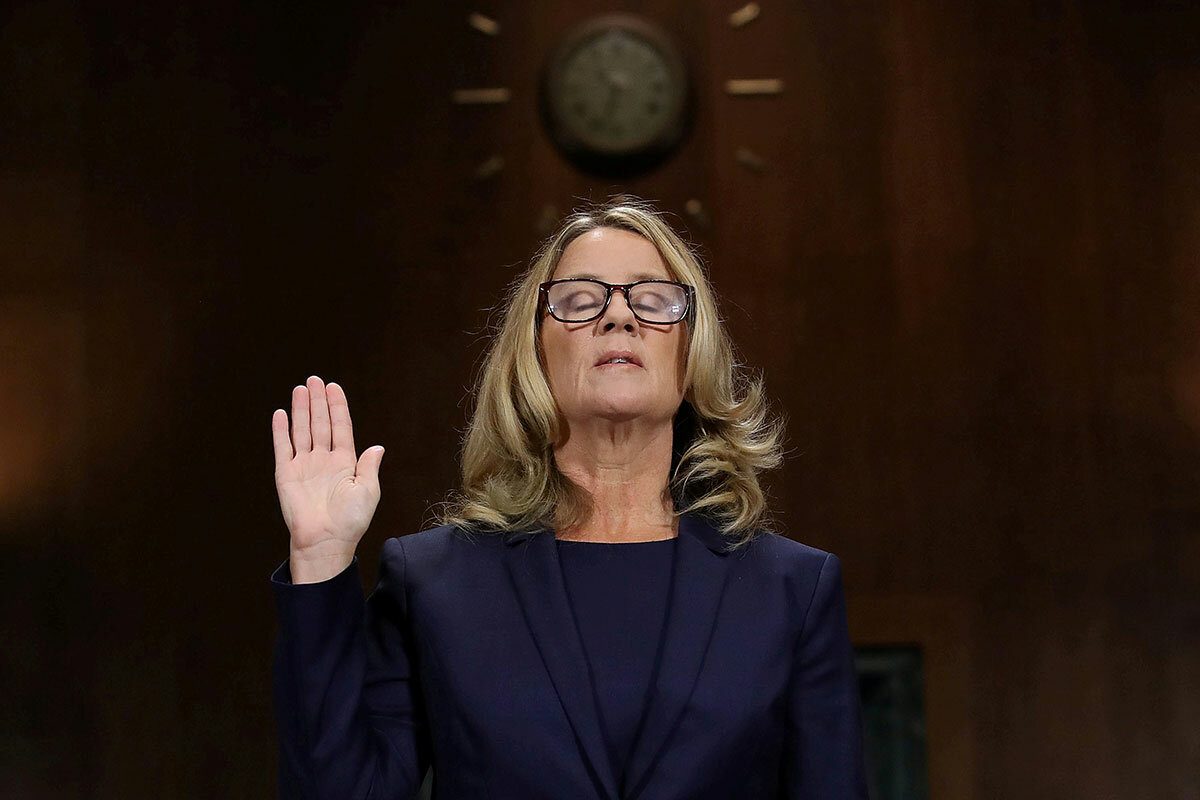
By the early 20th century, however, industrialism and urban living evoked a crisis in masculinity. Ideals of restraint gave way to the celebration of a more reckless masculinity. The closing of the frontier led to the myth of the cowboy and his isolated, idealized way of life. Images of Native Americans and Tarzan began to emerge as masculine ideals.
“But you also have in American psychology at this point the development of academic theories to support this,” says Du Mez. “There was the fear that in the 20th century, men, especially white middle class and upper class men, might not be masculine enough anymore. Who exemplifies this rugged masculinity? And they realize that it’s not them.”
“And so that’s where they come up with that developmental model, where boys will be boys, that boys need to sow their wild oats, that they need to go through a ‘savage stage’ of development, like Tarzan did. And after they experience that developmental stage in its fullness, then they will grow up, then they can develop some restraint, after somehow preserving this core of masculinity that otherwise seemed lacking.”
Today, it’s a culture in which young men are in many ways encouraged to establish their place in the masculine hierarchy. It includes locker room roughhousing and aggression, boasts of sexual “scoring,” and the use of humiliating slurs invoking the image of women or effeminate men.
“The fact that this kind of talk is so prevalent isn’t a defense. It’s an indictment,” says Maggie Seymour, who deployed to Afghanistan and Iraq as an intelligence officer. She has seen the “boys will be boys” attitude fermenting on both military bases and college campuses. “...This sort of defense not only allows sexual assault but encourages it by setting the bar so low.”
And excusing vulgar comments about women demeans another gender, she adds.
“It’s also incredibly insulting to men,” Ms. Seymour says. “I firmly believe men are capable of understanding human emotions and interactions and controlling their impulses.”
David Rullo, a lawyer and former police officer who lives in Verona, N.J., took part in the invasion of Iraq when he was in the Marine Corps. He recalls the lack of respect that men in the military displayed toward women in uniform. “It makes me incredibly sad that all of this behavior was going on and we didn’t know how wrong it was.”
“We should have known,” says Mr. Rullo. “And I think that the silence from a lot of the men comes from injured pride. People don’t want to say, ‘We screwed up. We were wrong.’ ”
Indeed, the vulnerable testimony of Christine Blasey Ford on Thursday contrasted sharply with the angry and partisan testimony of Judge Kavanaugh. President Trump and many Republicans welcomed his aggressiveness as justified righteous indignation, even while expressing sympathy with Dr. Blasey Ford, whom they believe must have been assaulted by someone else in the past.
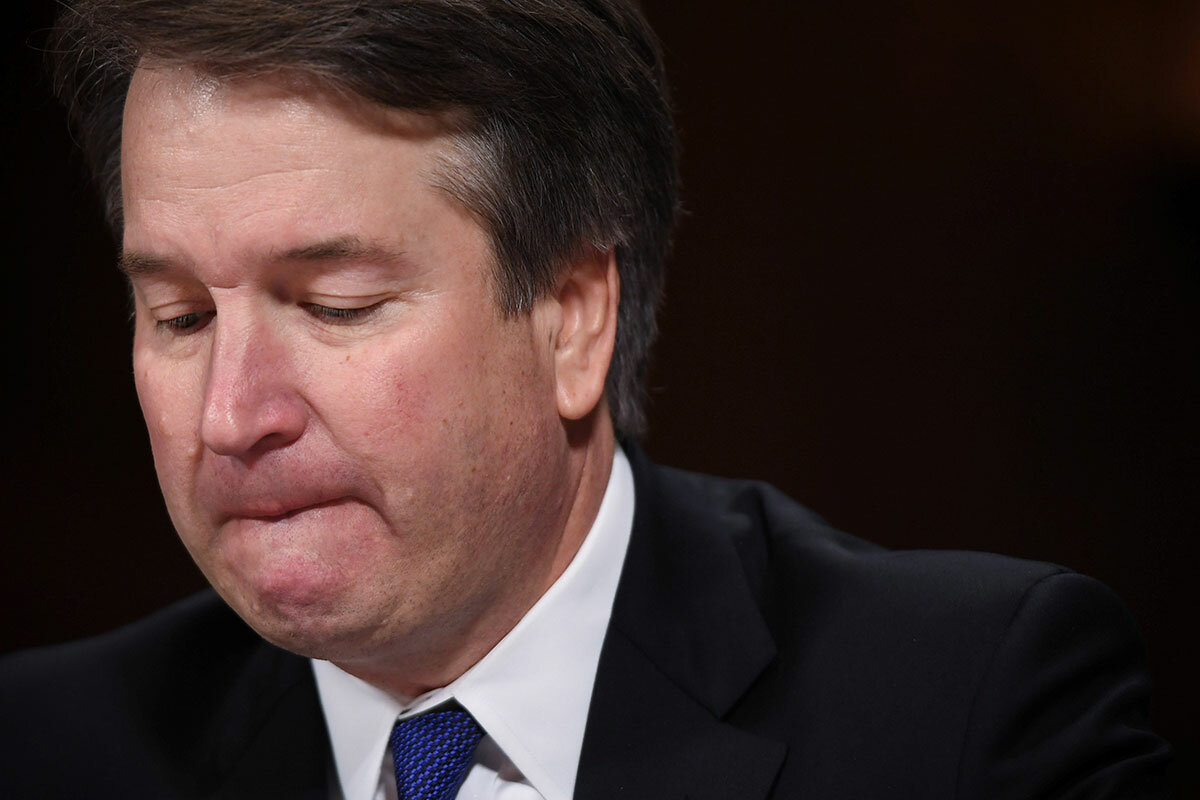
Still, for many observers, Kavanaugh’s testimony laid bare the kind of “boys will be boys” ambivalence especially among the nation’s ruling elites. “I like beer” became a kind of leitmotif of the Supreme Court nominee’s testimony, and his pored-over high school yearbook contained references to his membership in the “Keg City Club” and frequent vomiting.
Many are also questioning the judge’s characterizations of well-known sexual innuendos. He and eight other football players described themselves as “Renate Alumni,” horrifying the woman in question, who only learned of the yearbook inscription last week. “[The] insinuation is horrible, hurtful and simply untrue,” Renate Dolphin told The New York Times. “I pray their daughters are never treated this way.”
Kavanaugh and other former students denied that this was a boast of sexual conquest, however. “That yearbook reference was clumsily intended to show affection, and that she was one of us,” he testified, saying they admired her and merely referred to the fact that each went to dances with her or shared a kiss.
“My professional opinion is, is that the majority of men do not do this, we know that,” says Fisher, the ethicist at Fordham. “The majority of adolescents and teens do not assault young women.”
“So there is a character trait that allows for this kind of behavior,” she continues. “And I think that’s the issue that’s coming to the fore. Whether it was 30 years ago or 40 years ago, what kind of foundational character traits are underlying a person who would mock or traumatize women, who would be violent with women, or would exert power in a physical way?”
Monitor correspondent Martin Kuz contributed to this report from Sacramento, Calif.

A ‘Trump doctrine’ on trade? He’s anti-globalist but still wants deals.
Recent US trade deals offer insights for other nations, including China, about what the Trump administration wants in a deal: digital-oriented and US labor-friendly.

- Quick Read
- Deep Read ( 5 Min. )
US markets – and the world – may want to breathe a sigh of relief when it comes to Trump trade policy. He’s nudging the United States toward more protectionism, but a deal this week suggests he’s no wrecking ball. The global supply chains built by US corporations are mostly intact after the last-minute agreement signed Sunday with Canada. President Trump pushed for terms aimed at creating more US auto jobs. But if Mr. Trump is edging away from globalism, his revisions to the North American Free Trade Agreement also have elements not that different from the Obama-era. A big focus is on digital protections for online material and strong patent protections for biotechnology and financial services. The deal also knocks down long-standing trade barriers, most notably in Canada’s highly protected dairy industry. Experts say the patterns established by the deal and the South Korean trade agreement before it are likely to persist in new negotiations. Says Simon Lester of the Cato Institute: “The approach to Japan and the EU is likely to be similar.”
A ‘Trump doctrine’ on trade? He’s anti-globalist but still wants deals.

Despite the tirades against imbalances in imports, the tweets threatening to pull out of international pacts, and undiplomatic statements about foreign negotiators, President Trump is starting to put together a string of deals that tell where his administration is headed on foreign trade.
For example, the agreements focus on manufacturing but they are not backward-looking. The US-Mexico-Canada deal, reached on Sunday, devotes large sections to the digital economy and other language that modernizes provisions of the North American Free Trade Agreement (NAFTA).
Mr. Trump’s “America First” approach by definition departs from a globalist worldview. Yet trade is more than a political punching bag to rev up his base. The timing of the just announced three-nation deal, officially the United States-Mexico-Canada Agreement (USMCA), was determined by the exigencies of Mexican politics, not the US midterm elections.
The biggest takeaway is that the administration is ready to deal.
“If I were the Chinese, I'd be thinking: ‘Hmmm, the Americans are capable of making deals – and they're capable of [giving up] their most outrageous demands if they get something serious and substantive in return,’ ” says William Reinsch, a trade expert at the Center for Strategic and International Studies, a Washington think tank. “That's really the takeaway from Korea [a South Korea deal in March], the takeaway from Mexico and Canada, and also the takeaway from the EU [European Union] and Japan, which are both works in progress.”
‘Not blowing up the system’
The Trump deals nudge US trade policy in a new, antiglobalization direction.
“What I'm seeing is a modest pullback on free trade and economic integration,” Simon Lester, a trade policy analyst of the Cato Institute, a libertarian think tank in Washington, writes in an email. “The Trump administration is not blowing up the system (yet), but they are scaling it back.”
The thrust of the administration’s trade deals is to encourage companies that manufacture abroad and sell to the US to relocate their factories to America. In the South Korean trade deal, for example, that nation won’t be subject to the 25 percent tariffs that the White House has imposed on other steel imports. In exchange, however, South Korean agreed to cap its steel exports to the US at 70 percent of their current level.
In the USMCA, 75 percent of cars have to be produced in North America to escape duties – up from 62.5 percent under the old agreement. And the duties, now low, could jump if the administration follows through on threats to boost tariffs by arguing that national-security interests are at stake.
Cars figure prominently in all the administration’s trade deals. But that’s scarcely a throwback to the past.
Rules for digital era?
“It's a canard” to classify autos in an “old economy” category, says Stephen Ezell, vice president of global innovation policy at the Information Technology and Innovation Foundation in Washington. Some 40 percent of a car’s value today is electronics and other advanced intellectual property (IP), he says.
The USMCA also modernizes NAFTA with criminal penalties for online piracy of movies, strong patent protections for biotechnology and financial services, and bans on duties for electronically distributed IP, such as books and software.
The deal’s focus on IP and the digital economy highlights another pattern: While in many ways breaking with globalism, Trump’s trade approach is in some ways not that different from what former President Barack Obama was seeking during his term in office – accords that update trade policy for the knowledge-based industries that are key to 21st-century economies.
Trump fulfilled a campaign pledge by withdrawing support for Mr. Obama’s proposed Trans-Pacific Partnership. Yet Mr. Ezell calls Trump’s USMCA a kind of “back door” to the same goal – new trade rules for the Pacific Rim – if Japan is also brought on board through a bilateral agreement. (The start of formal US-Japan talks was announced last week.)
Template for more agreements
Because each of Trump’s trade deals has included much of the same language – such as prohibitions on currency manipulation – experts predict the patterns will extend to future agreements.
“The approach to Japan and the EU is likely to be similar, although in those cases, there is no existing [free trade agreement] in place, so more liberalization is possible,” says Mr. Lester of Cato. “As for China, that's a different story. The Trump folks are on the attack there, and I don't see them letting up anytime soon.”
On some fronts the bargaining with Canada contained traditional reductions of longstanding trade barriers. Canada will open its markets to more US milk and dairy products, under the USMCA, while the US offered some opening of highly protected agriculture markets, such as for sugar.
The administration has also demonstrated flexibility. When it proposed that a certain percentage of cars had to be made specifically in the US – something Canada and Mexico balked at – US negotiators switched to a minimum pay standard that is the first of its kind in a trade agreement.
If 40 to 45 percent of a car or car parts are not made by North American workers earning at least $16 an hour (read: American or Canadian autoworkers), the cars and car parts would be subject to tariffs.
In a big win for the US, Mexico also agreed to phase out “employer protection unions,” which help the company rather than workers, and instead create real collective bargaining between workers and employers.
US unions, which have been calling for such moves for years, are upbeat about these labor-friendly clauses. But many of the details remain unknown, such as how the Mexican labor legislation will be enforced. So unions are not ready to jump onboard.
“Too many details still need to be worked out before working people make a final judgment on a deal,” AFL-CIO president Richard Trumka said in a statement Sunday.
Perhaps appealing in part toward Democrats whose votes may be needed to approve the deal in Congress early next year, the Trump administration also touted the USMCA as delivering environmental benefits. But trade deals have long been criticized for doing too little on issues like protecting water, air, and fisheries, and some analysts say Trump’s revisions of NAFTA don't depart from that pattern.
If anything, they say the USMCA is worse than other US trade deals since 2009. Where those included language reinforcing seven international environmental agreements, the new agreement has only weak language on some and no language on others, says Ben Beachy, a trade-law expert at the Sierra Club, based in Oakland, Calif.
“There's zero mention of lead” as a pollutant, he says. “There's zero mention of climate change.”
On the face of it, Trump’s trade deals should boost factory jobs in the US. “It means far more American jobs, and these are high-quality jobs,” the president said Monday, touting the USMCA. But so many factors affect manufacturing, such as automation and the overall level of the economy, that it’s hard to predict whether jobs will lost or created.
“I don't think it’s going to be a big number [of jobs], either way,” Mr. Reinsch says.
Staff writer Mark Trumbull contributed to this article from Washington.

Tsunami: understanding the science of seabed disruption
Our hearts and prayers go out to those caught by a tsunami in Indonesia. As rescue and relief efforts continue, we suspect readers also want to better understand the causes and what might mitigate or prevent future disasters.

Rescue workers are racing to aid the estimated 2.4 million people affected by Friday’s magnitude-7.5 earthquake and tsunami that devastated the city of Palu on the Indonesian island of Sulawesi, killing at least 1,200 people and hospitalizing hundreds more. More than 60,000 people have been displaced. The 2004 Indian Ocean tsunami, which killed about 230,000 people, illustrated the need for an international effort to understand and predict these fearsome waves. Interdisciplinary teams of seismologists, oceanographers, and computer scientists from around the world continue to map the seafloor, place detection buoys, and develop ever more sophisticated forecasts. The precise cause of Friday’s tsunami remains a puzzle, arising as it did from a horizontal “strike-slip fault” and not the vertical “megathrust” fault that typically triggers devastating tsunamis such as the Indian Ocean disaster and Japan’s 2011 Tōhoku tsunami. What happened next, however, is well known to science. Massive amounts of energy were released into the ocean, and the water behaved accordingly, with a wave propagating from the quake’s epicenter at hundreds of miles per hour. – Eoin O’Carroll


In election, Brazilians see flashback to fascism – or see decisive reform
"Fascist," "authoritarian," and "far-right" are words that are thrown around in US politics these days. Our reporter looks at what it means to use those terms now in a country that has recent memories of a military dictatorship.

- Quick Read
- Deep Read ( 5 Min. )
-
By Ciara Long Contributor
From the United States to Poland, the word “fascism” has been used to evoke ideas of authoritarian intolerance. In Brazil, the word has particular resonance among young opponents of presidential front-runner Jair Bolsonaro. The congressman and former army officer's comments have frequently drawn accusations of racism, sexism, and homophobia. He has also openly praised Brazil’s dictatorship-era political tactics, and fear of a throwback to an oppressive approach has galvanized youth. “The word ‘fascist’ ... embodies everything they don’t want,” says Esther Solano, a professor of international relations at the University of São Paulo. “These are young people for whom questions of race, gender, and sexuality are natural. Fascism is basically intolerant of all of this.” But supporters see his statements as being taken out of context. They view Mr. Bolsonaro’s rise as a way to right more recent wrongs. In recent decades Brazil has made strides on civil and economic rights and strengthened its institutions. But corruption scandals, a president’s impeachment, and a struggling economy have fueled a desire for change. The question now is what course change should take.
In election, Brazilians see flashback to fascism – or see decisive reform
As the sun beat down on the crowds gathered outside Rio de Janeiro’s city hall last Saturday, Heloisa Gussate, a music student in her late 20s, stood with her feet on either side of a marching drum, ready to jump into action. Chants, whoops, and laughter emanated from the groups passing by, but the exuberant atmosphere was contradicted by a heavy word slapped across almost all the signs and posters on the street that day: “fascist.”
In at least 62 cities across Brazil on Sept. 29, tens of thousands of protesters transformed main thoroughfares into brightly colored, glitter-splashed demonstrations against presidential front-runner Jair Bolsonaro, who was near-fatally stabbed at a rally in September. Campaigning with the hashtag #EleNão (#NotHim), protesters voiced their opposition to a candidate they say represents a turn back toward the values of Brazil’s era of authoritarian rule.
“He's someone who defends hate, who defends the dictatorship,” says Ms. Gussate, referring to Brazil’s repressive military regime from 1964 to 1985. Gussate fears that groups considered second-class citizens during the dictatorship – women, black Brazilians, and residents of low-income favela communities in particular – could face cutbacks to their rights under a Bolsonaro presidency.
“It’s not that far away from what already happens today,” she says, referring to challenges those groups face. “What will change completely is this,” she says, gesturing to the protesters. “This won't exist anymore.”
From the United States to Poland, the word “fascism” has been frequently thrown about in political criticism in recent years, often evoking ideas of an authoritarian political system with no tolerance for opposition. But in Brazil, with living memories of the military era, the word has particular resonance among Mr. Bolsonaro’s opponents.
The congressman and former army officer's comments have frequently drawn accusations of racism, sexism, and homophobia. He’s sometimes referred to as “Brazil’s Donald Trump” for his populist approach and polarizing public statements.
But it’s the idea of a possible resurgence of “fascism,” or a throwback to an oppressive approach to governance, that has so galvanized the nation’s youth. Some 53 percent of of Brazilians ages 16 to 24, a large chunk of last weekend’s marchers, reject Bolsonaro’s candidacy, according to polls released Oct. 2. Bolsonaro has expressed intolerance for adversaries, openly praised Brazil’s dictatorship-era violence, and voiced admiration for the army major whose unit tortured former President Dilma Rousseff and other dissidents.
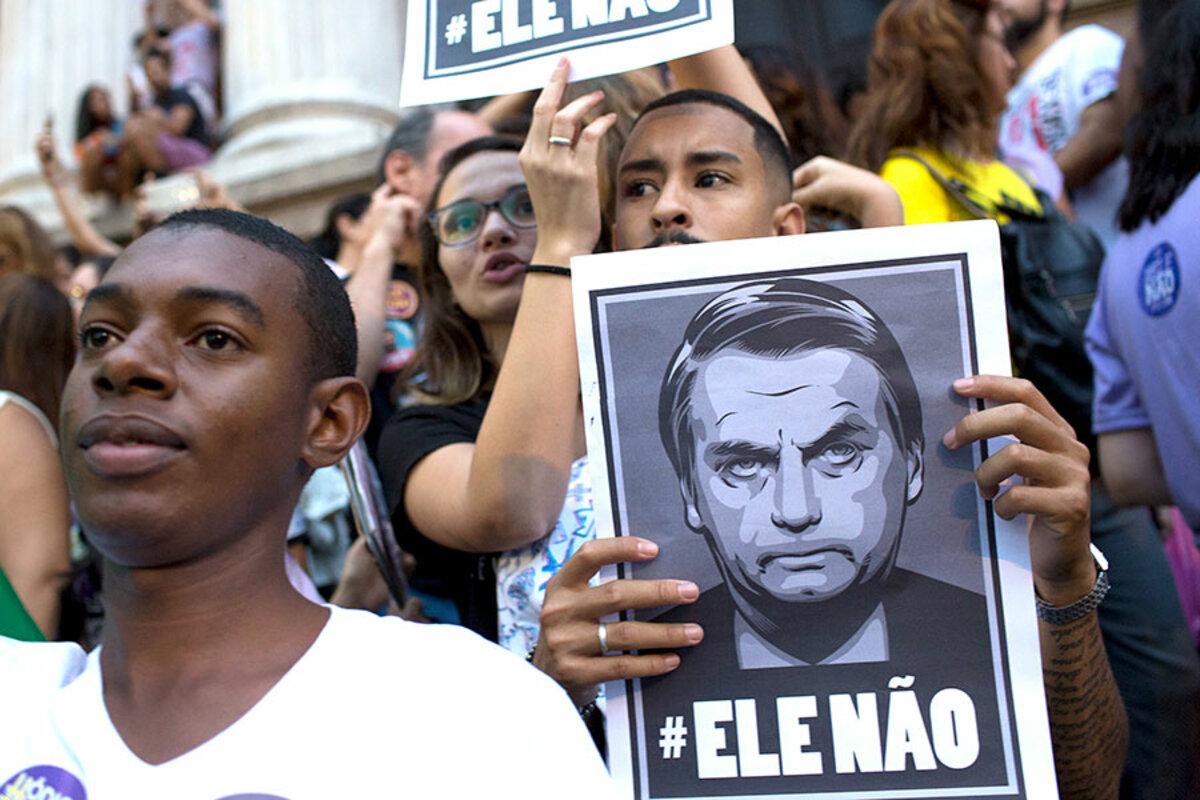
Younger Brazilians, who came of age under Brazil’s Workers’ Party (PT), weren’t alive during the dictatorship. But its history still looms large in high school curricula or at the family dinner table. And many already have first-hand experience with protest and police violence, such as a rash of high-school occupations in 2015 to oppose austerity-induced threats of school closures.
But what Bolsonaro’s detractors might see as a step back to the past, his supporters view as a righting of more recent, repeated presidential wrongs. Over the past two decades, Brazil has made big strides on civil and economic rights, and has strengthened its institutions, like the judiciary. However, ongoing corruption scandals, a president’s impeachment, and a struggling economy have fueled an overwhelming desire for change.
But for his opponents, “The word ‘fascist’ ... embodies everything they don’t want,” says Esther Solano, a professor of international relations at the University of São Paulo. “These are young people for whom questions of race, gender, and sexuality are natural. Fascism is basically intolerant of all of this.”
Surprise front-runner
Bolsonaro is currently leading voter polls, with 31 percent of Brazilians’ support. He wasn’t a likely victor just a few months ago, when former PT leader and two-term president Luiz Inácio Lula da Silva looked like a possible candidate and certain front-runner. But his imprisonment after a corruption investigation earlier this year officially disqualified him from him from running in the Oct. 7 presidential race.
His party’s new candidate, former São Paulo mayor Fernando Haddad, is currently polling 10 points behind. Mr. Haddad and Bolsonaro would tie in a run-off vote, according to a poll released Monday.
The nationwide protests against Bolsonaro came out of a Facebook group called “Women United against Bolsonaro,” with 3.5 million members. Posts within the group throw around the word “fascism” regularly, equating it with intolerance, extremisms, and the suppression of citizen rights. Some group members compare Bolsonaro to Hitler or Mussolini, citing his comments supporting military-enforced dictatorships.
“Brazil is a country in which women, and so many other minorities live very harsh and unfair realities,” says Maria Rita Taunay, a march organizer in Rio, describing why Bolsonaro’s candidacy compelled so many to turn out to protest.
Despite the middle class’s expansion over the first 10 years of this century, extreme poverty more than doubled between 2014 and 2017, according to research by Action Aid Brazil and the Brazilian Institute of Social and Economic Analysis. Violence is also growing: Brazil has one of the highest femicide rates in the world, and young black men disproportionately fall victim to murder – which reached a record high of 63,880 in 2017.
In Ms. Taunay’s view, women’s rights are too fragile to withstand a candidate who has argued against equal pay on the grounds that female employees can become pregnant, and who has famously joked about sexual assault. “Bolsonaro is a setback that we cannot afford,” she says.
Voting for something different
Widespread anti-PT sentiment has partially fueled Bolsonaro’s rise among an agitated and disillusioned electorate, says Thiago Krause, a history professor at the Federal University of the State of Rio de Janeiro (UNIRIO). “Bolsonaro serves as this symbol of destroying the political system, which everyone thinks of as totally corrupt,” he says.
“He’s been a congressman for 30 years, but he’s only had two bills approved,” says Bruno Mourato, an unemployed logistics worker in his late twenties who intends to vote for Bolsonaro. Mr. Mourato says PT’s long-running grasp on power only served to line the political class’s pockets, rather than governing for the benefit of ordinary Brazilians. “You have a gang inside the political system who govern for themselves,” he says.
Supporters argue that Bolsonaro’s comments are frequently taken out of context, and call his social positions sensible, such as his critiques of “gender theory.” Many also support his desire to scrap racial quotas for universities, intended as reparations for slavery, which they argue unreasonably benefit black Brazilians.
Opponents say their concern goes beyond incendiary statements, and centers on his commitment to democracy. During a 2015 TV interview, Bolsonaro defended Chilean dictator Augusto Pinochet, saying: “Pinochet did what had to be done. It had to be done violently.” His vice-presidential candidate, retired military general Antônio Mourão, has made public statements supporting military intervention in cases where the judiciary isn’t able to address the nation’s problems.
“Based on what I see in the streets, I [will] not accept any election result other than my election,” Bolsonaro told national media last week.
Many voters supporting Bolsonaro don’t necessarily support his perspectives, according to Thiago de Aragão, director of political consultancy Arko Advice. Nevertheless, he says, resentment and mistrust for the PT could drive voters toward the candidate.
“Voters will choose candidates based on who they want to see lose, rather than who they want to see win.”

Points of Progress
Sand blast: Beachcombers worldwide haul 20 million pounds of trash in one day
In this story, a global coastal cleanup day serves as an annual check on the plastics problem – and a measure of the growing environmental ethic, an active stewardship of our planet.
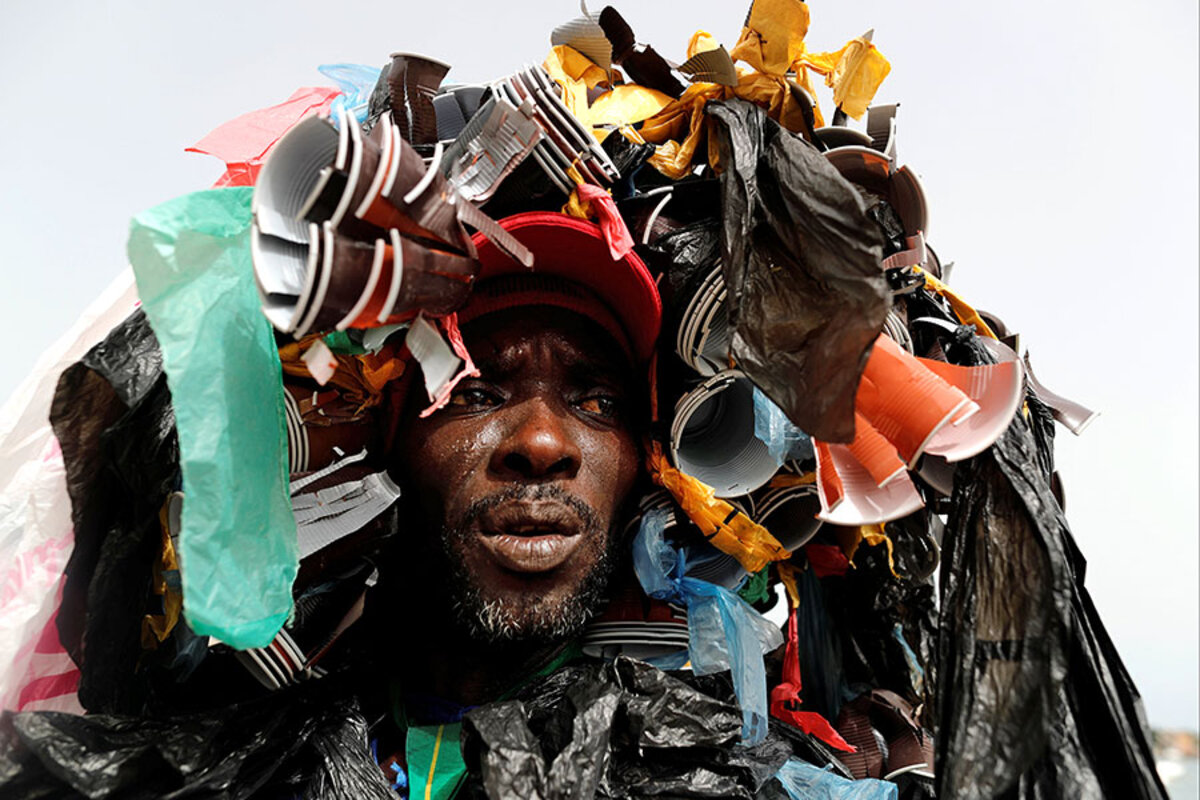
- Quick Read
- Deep Read ( 4 Min. )
Nearly 8 million tons of plastic entered the oceans in 2010, a number that is projected to double by 2020. But there has been a groundswell of grass-roots movements and local legislation to ban single-use plastic and clean up the world’s litter. On Sept. 15, hundreds of thousands of people in 106 countries beachcombed with a purpose for the International Coastal Cleanup. The annual event was started by the Ocean Conservancy in 1986 to illustrate how communities can help solve the problem of marine debris. In the past 30 years, the number of volunteers and the amount of trash collected for the cleanup day has grown exponentially – from an estimated 2,800 volunteers that first year to nearly 800,000 in 2017. The efforts have created momentum for a problem in need of global solutions. “If you’re doing a beach cleanup and not voting, you may be cleaning those beaches for a long time,” says Patricia Widener, associate professor of sociology at Florida Atlantic University. “It’s a different thing for an individual to stop using plastic versus to pressure national leaders to change policy with regard to plastic use.”
Sand blast: Beachcombers worldwide haul 20 million pounds of trash in one day
Picking up trash on a beach early on a foggy weekend morning is an unlikely activity for college students. But for a group from the University of Massachusetts Boston dressed in “Green Planet” shirts, enthusiasm surges as they slip on latex gloves. They are members of UMass Boston’s Green Planet Living Learning Community, which combines classes on sustainability, eco-conscious housing, and environmental outreach.
The volunteers dump all they’ve found here near Boston Harbor onto a blue tarp: water bottle caps, shards of tiny plastic, a few syringes.
For one student, the haul seems pitifully small – both a sign of how far Boston has come since The Standells sang their “Dirty Water” ode to the city’s Charles River in 1965, and how much more needs to be accomplished worldwide.
Dlynzee Damas, a sophomore majoring in environmental science, is originally from Haiti, where plastic waste is typically dumped directly into the ocean. “[M]ost of what we’ve picked up [today] is tiny – there’s not a lot of trash compared to everywhere else,” she says.
Though the pickings seemed slim to Ms. Damas, UMass Boston students were a small part of the hundreds of thousands of people in 106 countries beachcombing with a purpose that day. Together, they picked up about 20.5 million pounds of trash as part of the International Coastal Cleanup on Sept. 15, which was started by the Ocean Conservancy in 1986 to illustrate the role communities play in solving the problem of marine debris. In the past 30 years both the number of volunteers and the amount of trash collected has grown exponentially – from an estimated 2,800 volunteers that first year, to some 400,000 volunteers in 2008, and nearly 800,000 last year.

“These things are taking our attention back to the water and identifying how we’re connected to it. The sea is no longer able to hide or conceal the lifestyles of consuming nations,” says Patricia Widener, associate professor of sociology at Florida Atlantic University in Boca Raton, Fla.
Nearly 8 million tons of plastic entered the oceans in 2010, according to a 2015 study published in the journal Science. That number is projected to double by 2020. But there has also been a groundswell of grassroots movements and local legislation to ban single-use plastic and clean up the world’s litter.
“Over the last five to 10 years we’ve seen a rapid increase in public awareness about the issue, and more importantly, we’ve seen concern by citizens increasing,” says Nicholas Mallos, director of the Trash Free Seas program at the nonprofit Ocean Conservancy. When something as innocuous as a plastic straw is thrown onto a beach, out the window, or into a sewer, it can have global repercussions, experts say.
“Plastic could end up affecting ecosystems or people very far away. That’s hard for anybody to understand at an individual level. And while people are consuming products made of single-use plastic, they’re not thinking about that,” says Anne-Marie Hanson, associate professor of environmental studies at the University of Illinois, Springfield.
“We’ve gotten used to a lifestyle where we throw away things after one use … as long as we use single-use containers, there will always be more than we can actually clean up,” she adds.

More than 60 countries and two US states have bans on single-use plastic bags. Bioplastics, which biodegrade over a few months instead of centuries, are catching on worldwide. And a Dutch entrepreneur is launching a giant trash-collecting boom into the Great Pacific Garbage Patch – the largest concentration of plastic in the ocean – although many marine biologists and oceanographers are skeptical.
“When we talk about policies being introduced, these towns and cities with comprehensive single use [plastic bans] are leading the example,” says Linda Booker, director of the 2017 documentary “Straws.” She points to teenagers as being at the center of these policy changes. “The kids have been the most incredible activists, and they’ve had the most effective campaigns. They’re talking to restaurant owners, making campaigns in their schools, and taking pledges. They care very deeply, and especially don’t want to see animals hurt.”
While coastal cleanups and a patchwork of single-use bans have created momentum, they are only a start to a widening problem in need of global solutions.
“If you’re doing a beach cleanup and not voting, you may be cleaning those beaches for a long time,” says Professor Widener. “It’s a different thing for an individual to stop using plastic versus to pressure national leaders to change policy with regard to plastic use.”
Back at the beach clean-up in Boston, sophomore Collin Oliver reflected on plastic’s future.
“It’s a growing awareness, but it’s only in its middle stages,” he says. “We live here, so if we go to a beach right where we live, we can make a difference – and it hits a lot closer to home.”
Other headline stories we’re watching
(Get live updates throughout the day.)The Monitor's View
Amazon sets a high bar on wages
- Quick Read
- Deep Read ( 2 Min. )
-
By the Monitor's Editorial Board
Jeff Bezos, Amazon’s chief executive, has announced that the company wants to lead other large employers toward a purpose beyond the bottom line. On Nov. 1, Amazon will raise its minimum wage to $15 an hour. And, Mr. Bezos says, it will lobby Congress for an increase in the federal minimum wage, which has been $7.25 for nearly a decade. Amazon’s actions could inspire other firms to follow suit and move the needle on income distribution in the United States and other countries where it operates. It sets an example of how companies can balance private gain with social good. To be sure, Amazon needs to attract and retain workers in a tightening job market. And it is not the first big employer to raise wages beyond what the job market dictates. Gap, for example, said a boost in pay for its workers was based on its founding purpose that the clothing company must “do more than sell clothes.” For Amazon, its calling now seems to be in nudging both companies and government to set wages that show a higher respect for the well-being of workers.
Amazon sets a high bar on wages
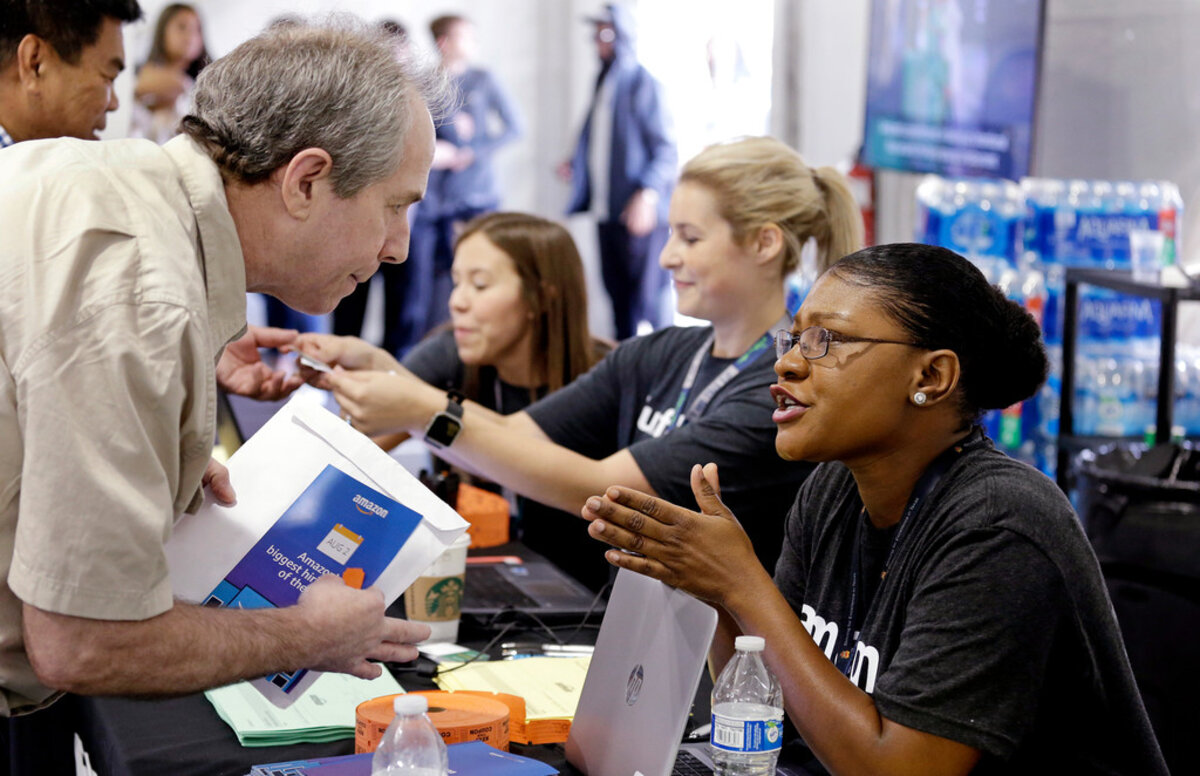
Amazon wants to be more than Amazon the online retail giant. On Oct. 2, its chief executive, Jeff Bezos, announced that the company wants to lead other large employers toward a purpose beyond bottom-line profits. He said Amazon will be raising its minimum wage to $15 an hour for all employees on Nov. 1. And it would lobby Congress for an increase in the federal minimum wage, which has been $7.25 for nearly a decade.
As the country’s second-largest private employer after Walmart, Amazon’s actions could inspire other companies to follow suit and move the needle on income distribution in the United States and other countries where it operates. At the least, it sets an example of how companies can balance private gain with social good. Or, as the first dean of Harvard Business School, Edwin Francis Gay, put it, the purpose of business is to “make a decent profit, decently.”
One “decent” aspect of lifting wages is that it shows a company values its workers as investments rather than a cost to be minimized. A stable and loyal workforce is more willing to help a company boost its productivity and meet the needs of customers.
To be sure, Amazon needs to attract and retain workers in a tightening job market, especially before the rush of holiday shopping. Average hourly earnings in the US rose 2.9 percent in August from a year earlier, the biggest rise since mid-2009. And as employers compete more for workers, those who switch jobs are seeing even higher wage gains.
Companies are dealing with both a strong economy and more demands by states to set a floor in pay for workers. The unemployment rate is near a 50-year low. And in 18 states the minimum wage increased this year.
Amazon is not the first big employer to raise wages beyond what the job market dictates. Target, Disney, CVS, and Aetna have made a splash in recent years in announcing big pay hikes. Gap said a boost in pay for its workers was based on its founding purpose that the clothing company must “do more than sell clothes.”
For Amazon, its calling now seems to be in nudging both companies and government to set wages that show a higher respect for the well-being of workers.

A Christian Science Perspective
Each weekday, the Monitor includes one clearly labeled religious article offering spiritual insight on contemporary issues, including the news. The publication – in its various forms – is produced for anyone who cares about the progress of the human endeavor around the world and seeks news reported with compassion, intelligence, and an essentially constructive lens. For many, that caring has religious roots. For many, it does not. The Monitor has always embraced both audiences. The Monitor is owned by a church – The First Church of Christ, Scientist, in Boston – whose founder was concerned with both the state of the world and the quality of available news.
Forever child
- Quick Read
- Read or Listen ( 1 Min. )
-
By Jennifer Ann Gordon
Today’s column explores, through poetry, our good and joyful nature as the children of God.
Forever child

You are the
child of God –
child
child
child of God –
not grown-up of God
or
adolescent … infant … embryo
millennial, baby boomer, or anything else of God
but
child
innocent
pure
spiritual
perfect
fresh
vibrant
receptive
trusting
joyful
completely cared for and watched over
every moment of every day
and every moment of every night
forever
forever
forever
child of God
Be ye therefore perfect, even as your Father which is in heaven is perfect.
– Christ Jesus, Matthew 5:48
Mortals will lose their sense of mortality – disease, sickness, sin, and death – in the proportion that they gain the sense of man’s spiritual preexistence as God’s child; as the offspring of good, and not of God’s opposite, – evil, or a fallen man.
– Mary Baker Eddy, “Miscellaneous Writings 1883-1896,” p. 181
Poem originally published in the Aug. 6, 2018, issue of the Christian Science Sentinel.

A message of love
Compassion

A look ahead
Thanks for joining us. Come back tomorrow: We’re working on a story about what’s behind the global decline in alcohol consumption.



